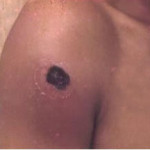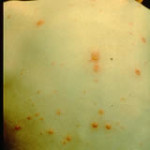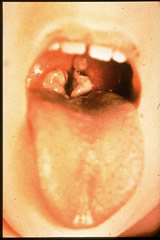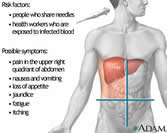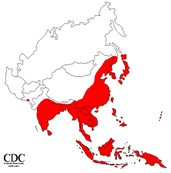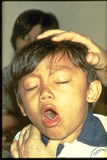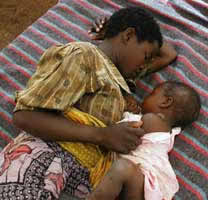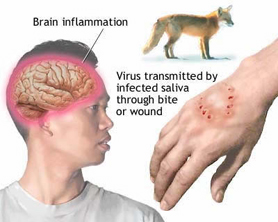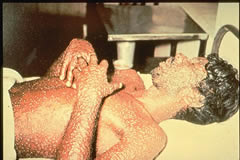GoodTrips Infectious Diseases List
For the interest of patients and the lay public, GoodTrips Travel has put together information about a number of infectious diseases and certain vaccines.
This list is by no means complete, nor is it authoritative. It is intended as a starting point of enquiry for the lay person interested in learning more about infectious disease and, where vaccines exist, about vaccination.
Toward this purpose, links to more complete and expert sites are provided.
The inclusion of brand names of vaccines is for the information and convenience of the interested Australian reader, and does not constitute any commendation of the named product or of its manufacturer.
Any errors of fact or emphasis would be greatly appreciated.
WARNING. Several infectious diseases in this list (chlamydia, human papilloma virus and syphilis) contain illustrations of genitals which may require parental guidance.
Click on the name to learn more.
Anthrax
Anthrax is an infection, usually acquired via the skin or – rarely – through the gut or by inhaled particles, of the spore-forming bacterium, Bacillus anthracis.
Chickenpox (varicella)
The chickenpox virus (the varicella-zoster virus) is highly infectious and thought to be spread by nasal droplets from person to person.
Chlamydia infection
Chlamydia is the name given to a distinct genus of bacteria, which causes a wide spectrum of human illness. Three species (C.pneumoniae, C.trachomatis and C.psittaci) are acquired by different means and cause extensive health problems.
Cholera
The cholera bacteria (Vibrio cholerae) is usually acquired from food or water contaminated by human faeces. The incubation period is a few days, after which profuse watery diarrhoea occurs.
Dengue fever
Dengue fever, also known as ‘break bone fever’, results from infection by one of four strains of virus from within the flavivirus genus.
Diphtheria
Diphtheria is caused by the exotoxin produced by the Gram-positive bacillus diphtheria bacterium Corynebacterium diphtheriae. Spread is by nasal droplet from person to person. The bacteria release a toxin, which can produce nerve paralysis and heart failure.
Ebola Virus disease
Ebola Virus disease (EVD) is one of several rare, serious and commonly fatal infections, which may be haemorrhagic. Others in the group include Lassa fever, Marburg Virus disease and Crimean-Congo haemorrhagic fever.
Hib (Hæmophilus influenzæ type B)
Spread of the Haemophilus influenzae bacterium is by nasal droplets. After incubating for 2 days, the infection causes an acute illness with fever, vomiting and lethargy, which are symptoms of meningitis.
Hepatitis A
The hepatitis A virus (HAV) is a highly infectious disease affecting the liver. Spread is by the oral-faecal route from person to person or from contaminated food or water.
Hepatitis B
The hepatitis B virus (HBV) is a DNA virus belonging to the hepadnaviridaefamily. It is spread via the blood or sweat of an infected person, usually through sexual contact or from the unsafe use of injected drugs. Spread may also occur from mother to child at birth, but also in a variety of other ways. The HB virus affects the liver and can cause fever, nausea, tiredness, dark urine and yellow skin (jaundice).
Hepatitis C
The hepatitis C virus (HCV) is a known carcinogen.
The hepatitis C virus occurs world-wide. It has many subtypes and is usually spread from person to person by the passage of blood through blood transfusion, the sharing of injecting equipment among drug users, tattooing, body piercing, needle-stick injuries, unsafe handling of blood products or from mother to baby.
HIV/AIDS
The human immunodeficiency virus (HIV) is an RNA virus within the retrovirus family, which is spread from person to person by the transmission of bodily fluids.
Human Papilloma virus (HPV)/Cervical cancer
Genital warts (condylomata acuminatum) are caused by certain strains of the human papilloma virus (HPV) and resemble ordinary warts seen in other areas of the body. HPV is the most common sexually transmitted infection throughout the world.
Influenza
The influenza viruses (orthomyxoviruses) occur in three groups (A, B and C) and are passed by direct contact through aerosol spread. Types A and B are important in humans, while C may cause illness.
Japanese encephalitis
This serious infection of the brain is caused by the JE virus, a flavivirus, infection transmitted to humans during the life cycle of Culex tritaeniorhynchus and Culex vishnui mosquitoes.
Legionellosis
Legionnaires’ disease is caused by bacteria belonging to the genus Legionella, of which there are about 40 species, the commonest being Legionella pneumophila.
Leishmaniasis
Leishmaniasis is a group of diseases caused by the protozoan parasite Leishmania of which there are about 20 species.
Leprosy
Leprosy, also known as Hansen’s Disease, is a chronic bacterial infection of the skin and superficial nerves caused by Mycobacterium leprae (M.leprae).
Leptospirosis is an acute zoonotic illness caused by spirochetes of the genus leptospira.
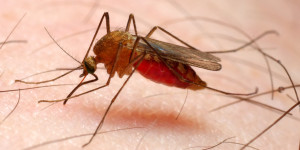 Malaria
Malaria
Malaria is a disease resulting from infection by parasites of the Plasmodium species, a sporozoan usually transmitted to humans by the infected female Anopheles mosquito.
Measles
The highly contagious Measles virus, a paramyxovirus, is spread by coughing and nasal droplets.
Melioidosis
Melioidosis is caused by the Gram negative bacterium Burkholderia pseudomallei.
Meningococcal infection
This is caused by droplet spread of the Neisseria meningitidis bacteria, of which at least 13 subgroups are known to exist.
Middle East Respiratory Syndrome (MERS)
Middle East respiratory syndrome (MERS) is a virus infection caused by the Middle East respiratory syndrome coronavirus (MERS-CoV).
Mumps
Mumps is a contagious, notifiable disease caused by the Mumps virus, a member of the Paramyxoviridae family. It is spread from person to person by saliva and primarily affects children.
Pertussis (whooping cough)
The contagious bacterium, Bordetella pertussis, is spread by coughing and by nasal droplets.
Plague
Plague is an infection caused by the bacteria Yersinia pestis. A major cause of death during the middle ages, plague is still reported from Asia, Africa, South America and in parts of the US.
Pneumococcal infection
Pneumococcal infections result from the spread of the pneumococcus bacteria, Streptococcus pneumoniae, by droplet spread. At least 90 antigenic types have been recognised.
 Polio
Polio
The highly contagious poliovirus is spread by contamination from the faeces or saliva of infected people.
Q-Fever
Q Fever is a zoonotic disease caused by Coxiella burnetii, a species of alpha Proteobacteria related to Legionella pneumophila, and is usually acquired by the inhalation of particles from infected animals.
Rabies
Rabies is an acute viral encephalomyelitis of the central nervous system resulting from infection by the Rabies virus.
Rotaviral gastroenteritis
Rotaviral gastroenteritis is caused by the Rotavirus, one of nine genera in the family Reoviridae.
Rotaviruses are RNA viruses which have been classified into five groups (A-E), each infecting the villi of the small intestine.
Rubella (german measles)
Nasal droplets spread the highly contagious rubella virus. After incubating for 2-3 weeks, the infection causes fever, headache, itchy eyes, swollen glands behind the ears and neck, and a rash – ‘german measles’.
SARS (Severe acute respiratory syndrome)
SARS is a serious illness caused by a virus spread mainly by droplets, especially those generated during medical procedures. The virus responsible for SARS has been designated the SARS-CoV virus and is related to coronaviruses, those responsible for the common cold.
Schistosomiasis
The disease called schistosomiasis (or ‘bilharzia’) is caused by infection with parasites of the Schistoma family (S.mansoni, S.haematobium, S.S.japonicum, S.mekongi and S.intercalatum – the first two being the most common).
Smallpox (Variola)
Smallpox is a highly infectious disease caused by the Variola virus, spread by respiratory tract droplets or by direct contact with skin lesions.
Tetanus
Tetanus (lockjaw) is a disease caused by the toxin of the bacterium Clostridium tetani, present in soil and animal faeces and follows from the contamination of cuts and wounds by these materials.
 Tuberculosis (TB)
Tuberculosis (TB)
Tuberculosis is an infection, mostly of the respiratory tract, by the bacteria Mycobacterium tuberculosis. Worldwide it is the leading cause of death with 8 million new cases and nearly 3 million deaths/year.
Typhoid
Typhoid is an infection of the gut caused by Salmonella typhi bacteria usually acquired from the consumption of contaminated food or water.
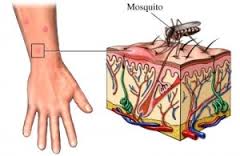 Yellow fever
Yellow fever
Yellow fever is an acute infection by a flavivirus, the yellow fever virus, transmitted from person to person by the Aedes aegypti mosquito, and is endemic in parts of Africa and South America.
Zika
Zika virus (ZIKV) infection is caused by a flavivirus, related to dengue and Japanese encephalitis. There are two ZIKV genetic lineages: the African lineage and the Asian lineage which has recently emerged in the Pacific and the Americas.


